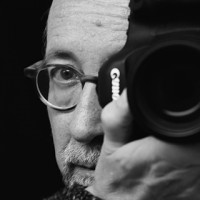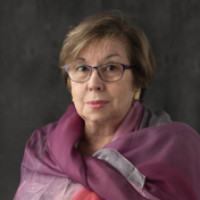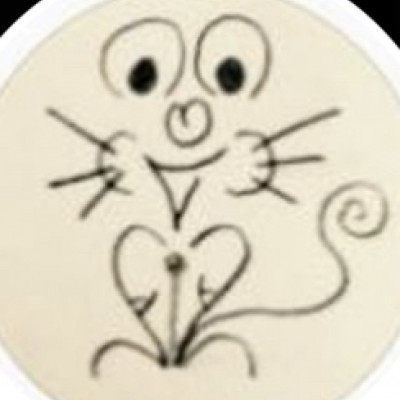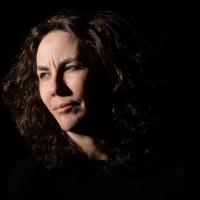SEARCH






|
|
|
|


by Editor Thomas Thomopoulos
Published: 11th of March 2020
Andro Loria excels in aerial photography. This image taken in Greenland in March 2019 is very different from his body of work. It really is a top action shot. How did he succeed to capture this stunning scenery? Let's listen to what he was so kind to share with us.
Can you tell us the story behind this stunning photo, Andro?
I love photographing the Arctic, as I grew up in cold snowy winters, so getting back to the North is always a homecoming for me. This was my third time in Greenland after trekking and sailing visits in 2014 and 2017 and as I love dogs and snow it was only a matter of time that I did a dog sledding trip. My first attempt to do so failed in February 2018 due to severe weather conditions. My second attempt had more luck even though our route and plans were changed due to the weather again.
The route was a 5-days circuit around mountains of Ammassalik island. We managed to get only a quarter of our way into it when the weather turned foul and a strong wind called a Piteraq that originates on Greenland's ice cap stopped us from going further. Temperatures dropped to low -20s Celsius and the wind speed reached about 200 km/h. So, we decided to stay at the camp at Sermilik fjord in a descent shelter and wait. Whilst we were waiting for the weather to improve another dog sled team joined us - the one on the image.
When I saw the team approaching from afar, I was in a cabin. I grabbed my GFX50S camera with long lens (100-200 f5.6) pulled on my parka and ran outside. I had to get a good angle on the team’s route and I managed to get to the nearest high point, where I was knee-deep in snow, which gave me some stability under the constant barrage of the wind, that was blowing ice into my face and my lens. The good thing was that the ice/snow was very dry, because it was very cold so I could shake off most of it out of my lens hood.
I saw the team approaching a snow ledge where the dogs would have to charge upwards and I started taking shots. The dogs stretched into a great line that was so organic in the immediate landscape and the lead dog powered his way up, so I was very happy despite all the Piteraq gusts and cold. Typically, a sled team in Greenland has a fan formation unlike the line setup in Alaska or Siberia, which helps to sled on frozen sea surfaces, so seeing Greenlandic dogs in one nice line is not common.
After taking my shots, I had to get my camera into a bag and then place it into a watertight bag before I entered the cabin and wait until the camera slowly warmed up for an hour or so before I looked at the frames I took. I was very happy then and this shot is one of the best ten I took during that trip.
It is a pure action shot. What do you think about the use of the FUJI GFX50S, even though it's not made for action pictures?
I guess I am somewhat biased towards Fuji film cameras. I started shooting with the Fuji system about seven years ago and am totally in love with the system. Within a few years I moved on from APSC sensor bodies to the much larger GFX50S, which is a medium format camera but it is not sluggish at all when it comes to shooting fast moving scenes.
I do not use high-speed shooting, as the GFX50S only takes three frames per second, but I do not need to. The main reason I love the system is the physical dials on the camera and aperture ring on the lenses that allow you to work very fast even when you wear gloves.
It is a mirror less camera, so I see what I will get in the EVF and by using different film simulations (I use Provia and Classic Chrome for nature) and histogram I can very quickly adjust my settings. The camera (and its sensor) gives me fantastic results with superb 50Mpx files having 14-15 stops of DR. A number of recent DSLR cameras get high Mpx count, but the pixel pitch is large, much better for low light and great for printing. I had around 3k images from that trip with only about 5% out of focus, mainly due to the fast-moving sled jumping on rocks and ice and catching me by surprise.
The main subject is moving pretty fast in this image. Why did you choose 1/125sec? Can you also tell us more about the technical parameters you choose for this type of picture?
For this specific frame 1/125 was enough to freeze it. I also wanted to reduce the shutter speed to have some snow movement with wind. The light was very harsh. So, I set the aperture high to cut off the light and get all the shades of blue on snow’s surface, with the ISO set at 100. I was probably only about 30-50m away from the scene, so the lens was at 100mm focal distance (about 80mm in FF).
Can you also tell us some more about the image processing?
Until last summer I used the desktop-based (iMac) Adobe Lightroom CC, so this particular file was processed in Lightroom 7.
Since then I moved completely to the Capture One editing software, which I prefer for many reasons.
Usually the editing of my images is minimal.
All photos are first 'developed' using Fujifilm Provia Standard film simulation (inbuilt in Lightroom and Capture One).
When using Lightroom I apply a slight drop in shadows, slight drop in black and slight rise in white. I may also adjust the exposure slightly and add some clarity and vibrancy if needed. White balance is typically picked up by the camera very well, so if there is any adjustment needed it is very subtle.
Concerning the colours, the exposure and white balance is the high quality JPG file produced by camera during shooting.
Noise is something I do not worry about in GFX50S files and once edited, files are exported with the original 4:3 frame crop.
I have to say that once I started using a medium format camera I much preferred to use a 4:3 ratio for aerial and landscape shots.
If I choose to print a particular image I will edit it entirely in Capture One with most prints being made on Giclée Hahnemühle Photo Rag paper.
You mainly do aerial photography, what do you prefer when you take an aerial photo, the plane or the helicopter? Is there a particular technique for the plane or the helicopter?
True, in the last two to three years my focus has mostly been on aerial photography. I fly on both types of air crafts - helicopters, mainly for urban shots, and planes - for outdoor landscapes; both have advantages and disadvantages.
Helicopters are more expensive (four to five times more than planes) and have a lot of vibration, everything has to be fixed and all loose items stored in a secured bag or left on the ground. You cannot change batteries or lenses when you fly in a helicopter with doors-off, as anything that falls out may be picked up by wind and hit the tail rotor, putting you and others in great danger. The ability to remove doors, to significantly slow down and even hover over one spot provides a great advantage when taking photographs, especially when you want to take a few shots from certain angle in quickly changing light.
Planes are cheaper, usually have a window that you can open and put your camera through and give you a great feeling of flight, though not everyone may appreciate it, especially when plane banks (turns) to allow you a clear shot downwards. Add some turbulence, that is felt much more in small plane, wind speed that knocks your lens and you get some rather unusual shooting conditions.
I personally prefer small planes for the feeling of flight. I tend to get my head, shoulder and camera holding "shutter" arm out of the window, with my other hand controlling the aperture and zoom. I keep my shutter speed high at 1/1000 when taking top-down shots, although sometimes at slower flight speeds it could go down to 1/800 and even 1/640 on a few occasions when taking lateral shots of a landscape. My ISO is usually between 200 to 400, with maximum of 1600 in low light. Considering that shooting downwards one does not need to worry about depth of focus, technically I can shoot wide open most of the time, though I prefer one to two stops down and adjust the aperture accordingly when taking shots angled towards the horizon. Looking at my last year’s metadata, my most used shutter speed was 1/1000, ISO200-400 and f4.5-8. Focus wise one can set manual focus to infinity and keep it that way, even tape your lens' focus ring, but GFX50S autofocus never let me down so far.
It is also always handy to have two bodies when you shoot aerials, as you do not have the ability (or time) to change lenses. I use two identical camera bodies (one with a battery grip) and two lenses (hoods and filters removed) 32-64mm (23-50 in FF) and 100-200mm (70-140 in FF), which cover pretty much everything for me. The former lens is my main work tool with about 90% of shots taken with it. It also helps to have spare SD cards and batteries ready in your easy to access pockets to change in the plane when you have a chance so you do not miss that shot. I typically shoot 4-6 64Gb fast (300Mb/s) cards during a day of flying and use up three to four batteries.
When doing aerial photography, one should not forget that the temperatures up there are lower, considerably lower when you are exposed to wind and have your hands and camera outside the plane. Wearing gloves helps, though slows down your camera handling, I wear thin napa leather gloves with a woollen lining. Wearing proper wind-proof clothing (gortex) and warm boots also helps a lot. Wearing parkas or large down jackets restricts your movement, as space is not very generous inside a small Cessna plane. The wind tends to dry your eyes very quickly and generates loads of tears (tears of joy of course) that tend to dry up on your glasses and EVF surface, so have a microfibre cloth ready to clean them when given a chance.
Finally - perhaps the most important thing is the communication with your pilot. Remember that safety is your prime objective and no shot is worth taking that risk when you are in the air. It always helps to discuss possible scenarios beforehand. Always ask your pilot whether it is okay to open window and shoot if you are not sure, e.g. when the speed is too high, and ask the pilot to get you into a specific position to shoot when you need to. It helps a lot if your pilot does and/or understands photography too, so it is easier to explain what you need. Technically you work as a team and your pilot is just as engaged as you are.
Thanks a lot Andro, for sharing your experiences in aerial photography as an enriching complement to your explanations about how 'Raw Power' was made.
 | Write |
 | Yvan Vial PRO
In this very special period, it is a breath of fresh air to read your interview. Your aerial photos are magnificent. After many Icelandic trips, I think the next one will focus on "from up there". Thank you for these magical photographs. |
 | Asuncion Salmeron PRO Dear Andro:
I read the interview in one breath because I found it very interesting; Tomorrow I will read it again more slowly to appreciate its words and find out everything with intensity. Age does not forgive and I am worth nothing at this time.
I am happy to get to know you a little better through your explanations and I take this opportunity to send you an affectionate greeting and my admiration for your wonderful work. |
 | TThomopoulos Dear Andro, it was very interesting to do this interview with you, I wish you all the best for the future :) |
 | Yvette Depaepe CREW Fine and interesting read, Andro! Thanks for adding information about your experience with aerial photography too. Congratulations... |
 | Bego Amare So nice to hear experience from Andro; cheers from Madrid!! |